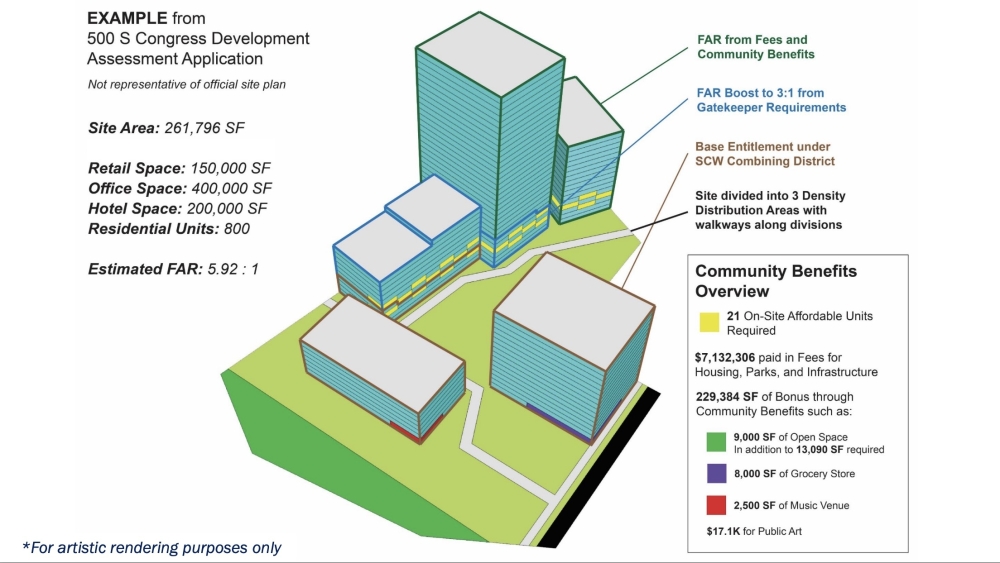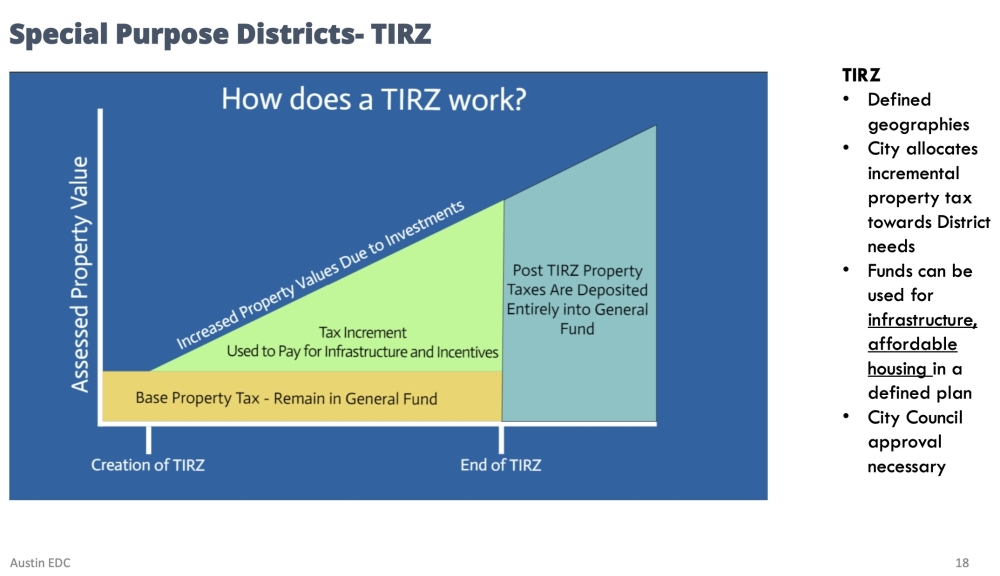The big picture
The South Central Waterfront covers more than 100 acres along Lady Bird Lake and Riverside Drive in the Bouldin Creek and South River City neighborhoods.
Community members, city leaders and developers have eyed the district's potential for years given its proximity to downtown and the lakefront, and the presence of many lots viewed as primed for redevelopment.
Planning for the district's future growth alongside desired public upgrades that could be realized alongside any new projects led to the creation of a civic blueprint for the area in 2016.
However, it's taken years to firm up the goals and recommendations of the South Central Waterfront Vision Framework Plan into official city policy that can guide future development.
What happened
Approval of new district-wide zoning plans for the South Central Waterfront was delayed again Sept. 12. Officials noted the indefinite postponement will likely stretch into next year—when at least two new members will join City Council.
“I do believe we’re going to get this right. And if we can get it done sometime early next year with the new dais, no one else would be happier than me," said council member Zo Qadri, who represents the district and downtown.
Council's decision was made to allow for additional collaboration between city and district stakeholders.
“The South Central Waterfront area is very crucial. We all know how crucial it is to our downtown development, and the development regulations in this area need to have the support of the city, the community and the property owners," Mayor Kirk Watson said. "Postponing the item today provides additional time for council and the community to align the visions and ensure we get the most out of this plan.”
If the new zoning districts are established, the update would clear the way for buildings of much greater height and density than currently allowed. With entitlements closer to downtown allowances than those in most city neighborhoods, a range of community benefits would also be required.

Also of note
New standards proposed across the district wouldn't necessarily apply where special zoning plans approved on a property-by-property basis.
The South Central Waterfront is already home to many such lots, where features like project scope and community benefits are negotiated individually rather than through a broader local plan. Those include planned unit developments, or PUDs, planned development areas, or PDAs, and Planned Development Agreements.
Plans for a PUD at 200 E. Riverside Drive, Austin earned support from the city's environmental and planning commissions in September. Council also postponed voting on a PUD case at 311-315 S. Congress Ave., Austin on Sept. 12.
Dig deeper
The latest step for the South Central Waterfront came months after a separate city taxing plan to support district improvements was halted.
City officials in 2022 moved to reserve a portion of property tax collections within South Central Waterfront boundaries for local civic upgrades. That took place through the creation of a new tax increment reinvestment zone, or TIRZ, blanketing dozens of properties within the district.
The TIRZ would've captured some of the hundreds of millions of additional tax dollars anticipated from new construction as the area further developed. That money would've been set aside for street, landscaping and other city infrastructure projects.
However, a lawsuit filed last year alleged the tax mechanism was illegally used for the South Central Waterfront.

Under state law, TIRZs are only intended for underdeveloped areas deemed to be in need of additional support to encourage new activity there. Opponents argued that the high-profile South Central Waterfront didn't meet that benchmark, especially after city officials said they expected new development to take place regardless of the city's approach.
“The city is legally required to show that the land is blighted and would not develop without public subsidies. The city failed to present any evidence that public funds were needed for the land to develop," Bill Bunch, attorney and SOS Executive Director who's recently spearheaded successful lawsuits against the city, said in a statement.
One more thing
Among the district's most notable future arrivals will be 305 South Congress, a mixed-use high-rise community coming to the site of the Austin American-Statesman's old waterfront campus.
In May, Save Our Springs sued the city over council's approval of the 305 South Congress PUD. The group claims special development and environmental clearances were improperly granted for the project through a zoning case that didn't meet certain public process requirements.
Save Our Springs now aims to reboot the "Statesman PUD" zoning case under development requirements that'd be more in line with the community's original intentions for the South Central Waterfront.
“The vision plan sets a goal of 20% affordable housing. The vision plan sets a goal of restoring the areas that are already paved, the riparian zone, to make sure that that area is available to filter pollutants before it hits Lady Bird Lake and Bouldin Creek. So that’s what we would be looking for in a new zoning process," SOS attorney Bobby Levinski told Community Impact.
That lawsuit remains in progress as of mid-September.






